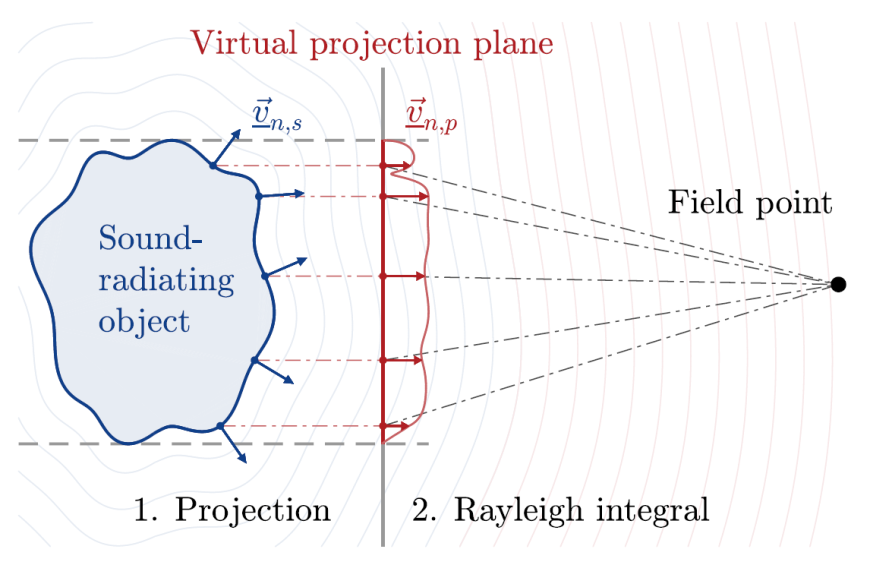Calculate high-frequency sound fields faster – with the new PPRI method.
Our article in Journal of the Acoustical Society of America is now online!
2025/03/13 by Christoph Haugwitz
With the new PPRI method, high-frequency sound fields can be calculated faster or more accurately than comparable other methods. Researched by our student Marius Walther during his bachelor thesis in cooperation with Bosch.

The sound radiation of vibrating surfaces can be calculated using integral-based numerical methods. Due to the increasing discretization requirements, the computational effort increases significantly with increasing frequencies. Therefore, approximation methods with less computational effort are desirable. This paper introduces a method called the plane projection Rayleigh integral (PPRI), which combines low computational effort with high precision. The method approximates the sound radiation by applying the Rayleigh integral to a vibrating virtual plane representing the object in two dimensions. The method's performance is evaluated by comparing it to the visible element Rayleigh integral and the high frequency boundary element method (HFBEM), focusing on the accuracy and its dependence on radius of surface curvature, sound frequency, and distance from the surface. Analytical solutions for the breathing and oscillating sphere are used as benchmarks. The PPRI demonstrates the highest accuracy among the methods tested. Error values decrease significantly with larger radii and higher frequencies, falling below a 1% threshold at 4 times smaller Helmholtz numbers (radius-wavelength ratio) than the HFBEM. Additionally, the PPRI requires the least computational time in this consideration. Thus, the PPRI achieves both high precision and efficiency.
Want to check the details? See the full article here.

